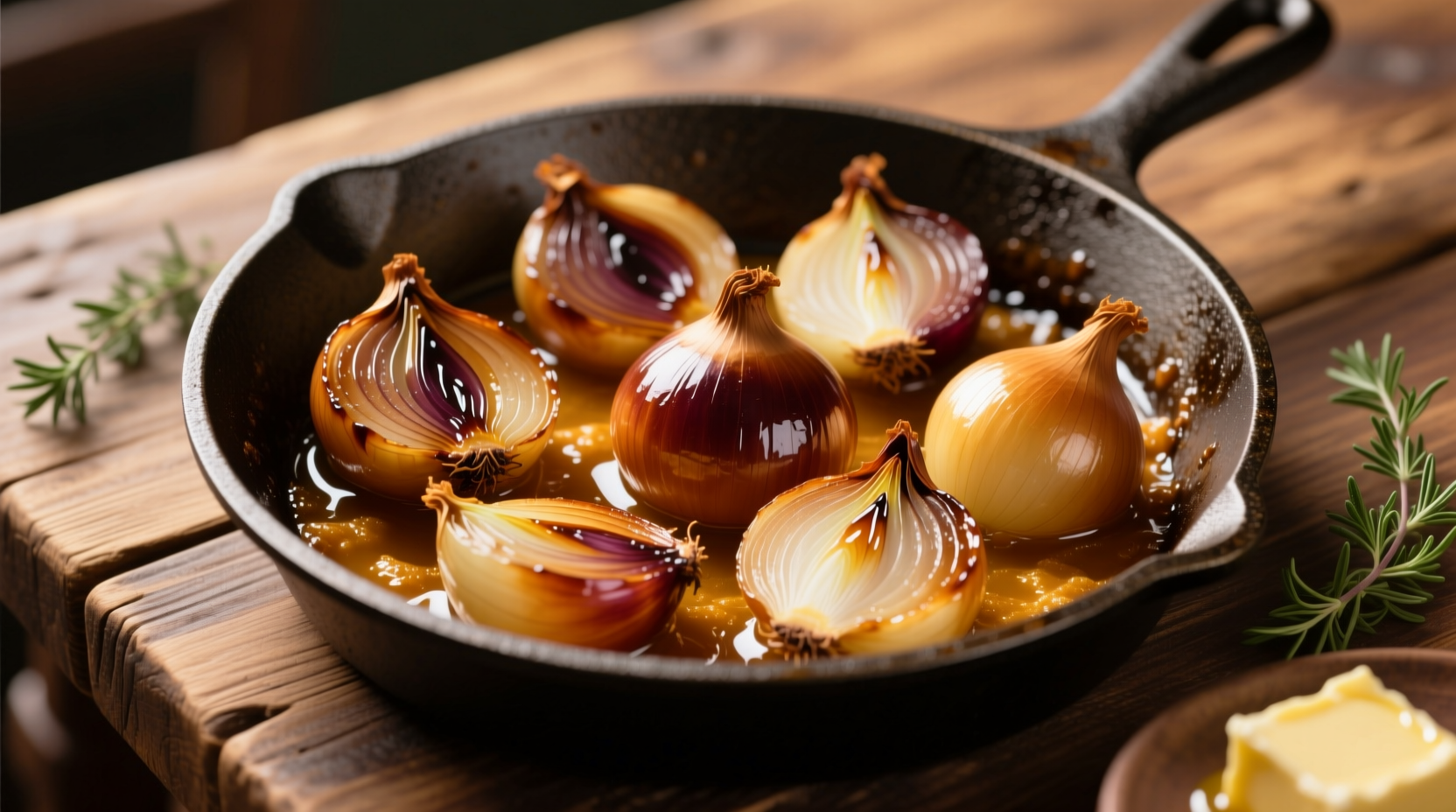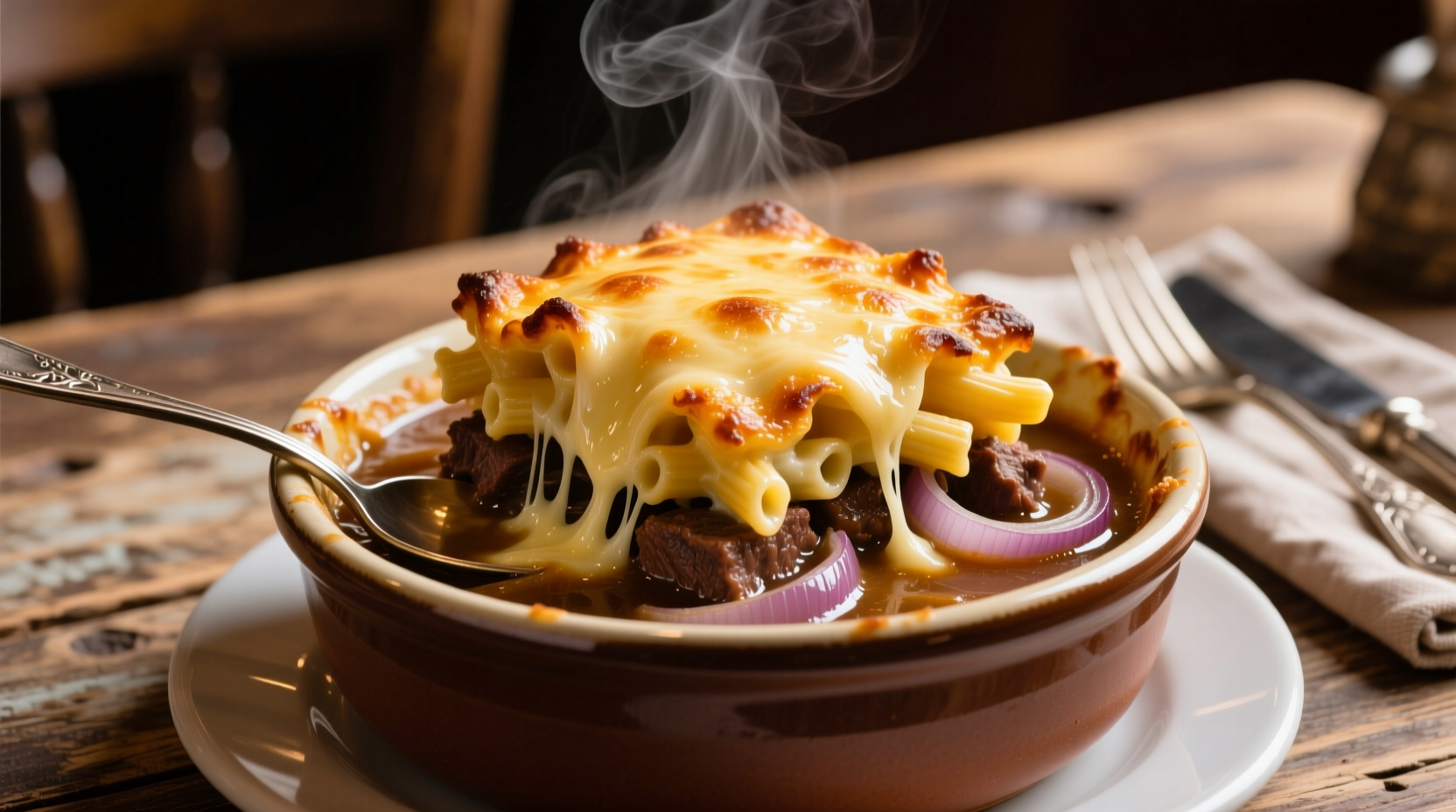Imagine the rich umami depth of French onion soup meeting the creamy indulgence of macaroni and cheese. This innovative fusion dish has gained popularity among home cooks seeking elevated comfort food, and for good reason. By thoughtfully combining these two classics, you create a dish with complex layers of flavor that satisfies both the craving for savory broth and creamy cheese.
The Culinary Logic Behind This Fusion
Food historians note that French onion soup dates to 18th century Parisian working-class cuisine, while macaroni and cheese has roots in European pasta dishes dating back to the 14th century. The magic happens because both dishes share foundational elements: caramelized onions provide the sweet-savory base in French onion soup, while quality cheese sauce forms the heart of macaroni and cheese. When properly executed, the beef broth elements complement rather than compete with the dairy components.
| Traditional Element | Fusion Adaptation | Why It Works |
|---|---|---|
| Beef broth base | Reduced broth in cheese sauce | Concentrated umami without making sauce watery |
| Melted Gruyère topping | Gruyère in both sauce and topping | Layered cheese experience with consistent flavor profile |
| Baguette crouton | Baguette breadcrumb topping | Texture contrast without sogginess |
Essential Ingredients for Authentic Flavor
The quality of your ingredients makes or breaks this fusion dish. For the French onion component, use yellow onions (not sweet varieties) for proper caramelization. Professional chefs recommend a 3:1 ratio of Gruyère to sharp white cheddar in the cheese sauce—Gruyère provides the authentic French onion soup flavor while cheddar adds necessary sharpness that holds up to the onions.

Step-by-Step Preparation Guide
Caramelizing Onions Properly (The Critical First Step)
Begin with 3 pounds of thinly sliced yellow onions cooked slowly over medium-low heat for 45-60 minutes until deeply golden brown. Add 1 tablespoon of sugar during the last 15 minutes to accelerate caramelization without burning. Deglaze the pan with 1/4 cup dry sherry, scraping up all the flavorful browned bits—a technique documented in Bon Appétit's culinary research.
Building the Cheese Sauce
Create a roux with 4 tablespoons butter and 1/4 cup flour, then gradually whisk in 2 cups whole milk and 1/2 cup reduced sodium beef broth. The critical ratio is 8 ounces total cheese to 2.5 cups liquid—exceeding this causes sauce separation. Remove from heat before adding shredded cheese to prevent clumping. For optimal texture, use freshly grated cheese rather than pre-shredded varieties which contain anti-caking agents.
Assembly and Baking
Combine cooked pasta (cavatappi works best for sauce adherence), caramelized onions, and cheese sauce. Top with a mixture of panko breadcrumbs and finely diced baguette for that essential French onion soup crunch. Bake at 375°F until bubbling and golden—approximately 25 minutes. Let rest 10 minutes before serving to allow the sauce to set properly.
Avoiding Common Pitfalls
Many home cooks encounter issues with this fusion dish. The most frequent problem is sauce separation, which occurs when cheese is added to liquid that's too hot or when using pre-shredded cheese. Another common mistake is using too much broth, which dilutes the cheese flavor. This fusion works best in cooler months as a main course, but becomes overwhelming in summer heat—a clear example of context boundaries for comfort food innovation.
Variations for Different Dietary Needs
For a lighter version, substitute half the cheese with pureed cauliflower while maintaining the same volume. Vegetarian cooks should use mushroom broth instead of beef broth, though the flavor profile shifts significantly. Gluten-free adaptations work well with rice pasta and a cornstarch slurry instead of roux, but require careful liquid ratio adjustments.
Serving and Storage Recommendations
Pair this dish with a simple green salad to cut through the richness. Leftovers maintain quality for 3-4 days when stored in an airtight container. Reheat gently on the stovetop with a splash of milk to restore creaminess—microwaving often creates an unpleasant texture. Freezing is not recommended as dairy-based sauces frequently separate upon thawing.











 浙公网安备
33010002000092号
浙公网安备
33010002000092号 浙B2-20120091-4
浙B2-20120091-4